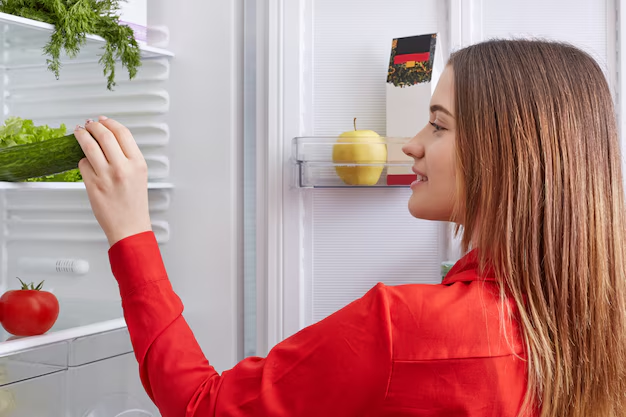Ideal Temperatures: Keeping Your Refrigerator and Freezer at Their Best
Is your refrigerator or freezer not keeping things cool enough? Or perhaps it’s so cold you’re pulling a Popsicle out of your lettuce drawer! Maintaining the right temperature in your food storage units is more crucial than you might think. It ensures food safety, longevity, and optimal energy efficiency. Let’s explore how to set your appliances just right and dive into some practical insights to achieve the perfect balance.
🧊 Why Temperature Matters
Refrigerator and freezer temperatures are vital for food preservation. If the temperatures are too high, food can spoil, posing health risks. Conversely, if they’re set too low, you may end up with unnecessary freezing, leading to food quality affects.
Food Safety and Shelf Life
A refrigerator too warm encourages bacterial growth, which can lead to foodborne illnesses. Bacteria thrive between 40°F and 140°F, so keeping food items below this range is critical. Ideally, your refrigerator should be at or below 40°F (approximately 4°C).
Freezers need to be even colder to effectively stop bacterial growth and preserve food over long periods. The ideal temperature setting for a freezer is 0°F (-18°C) or lower.
Energy Efficiency
A refrigerator operating too cold or without restraint can lead to higher energy costs and increased wear on its components. This can shorten the lifespan of your appliance, causing both financial and environmental impacts.
🛠️ Optimal Temperature Settings
Recommended Settings
For best results:
- Refrigerator: Set between 35°F to 38°F (roughly 1.7°C to 3.3°C).
- Freezer: Maintain at 0°F (-18°C).
Fine-Tuning Your Appliances
- Check Manufacturer Guides: Each model can have slight variations in design, leading to optimal performance at different settings. Always consult the manual for your specific unit.
- Consider External Temperatures: In hotter climates, refrigerators may need lower settings, while cold climates might allow for slightly higher settings without risking food safety.
🧩 Factors Influencing Temperature
Load and Airflow
The amount of food stored can affect temperature regulation:
- Overloading your fridge or freezer could block air vents, restricting airflow and causing uneven cooling.
- Underloading might mean faster cooling but can lead to inefficient operation and increased energy consumption.
Door Usage
Frequent opening of doors affects internal temperature stability. Try to minimize the duration and frequency of door openings to maintain consistent temperatures.
Location and Room Temperature
Avoid placing your appliances in areas susceptible to high temperatures like next to ovens or in direct sunlight. A stable and moderate room temperature helps to maintain efficiency.
🌟 Practical Tips for Optimal Performance
Here are some handy tips to ensure optimal refrigeration performance:
- Regularly check and clean the condenser coils, usually located at the back or underneath the unit, to prevent dust buildup and improve efficiency.
- Ensure door seals are tight. Test with a dollar bill: place it along the seam, close the door, and see if it slips easily. If it does, consider replacing the gasket.
- Organize efficiently—keep frequently used items at the front to reduce open-door time.
- Position thermometers inside both your fridge and freezer for accurate readings.
At-A-Glance: Temperature Recommendations
| Appliance | Ideal Temperature | Why Important | Check Regularly |
|---|---|---|---|
| Refrigerator | 35°F - 38°F (1.7°C - 3.3°C) | Bacterial growth prevention, better food preservation | Monthly |
| Freezer | 0°F (-18°C) | Stop bacterial growth, prolong food storage | Monthly |
Troubleshooting Temperature Issues
If you’re experiencing temperature fluctuations:
- Listen for unusual noises that could indicate a mechanical issue.
- Check for airflow obstructions inside the appliance.
- Inspect seals and gaskets for integrity.
- Test power supply stability to ensure consistent appliance operation.
If problems persist, consider consulting a professional technician.
💡 Wrapping Up: Keep It Cool!
Maintaining the right temperatures in your refrigerator and freezer isn't just about preserving food; it's about safety, efficiency, and environmental stewardship. By understanding how temperature affects your appliances, adjusting accordingly, and performing regular checks, you can enjoy longer-lasting fresh foods and contribute to energy conservation. A little mindfulness goes a long way in keeping your cool—quite literally!
